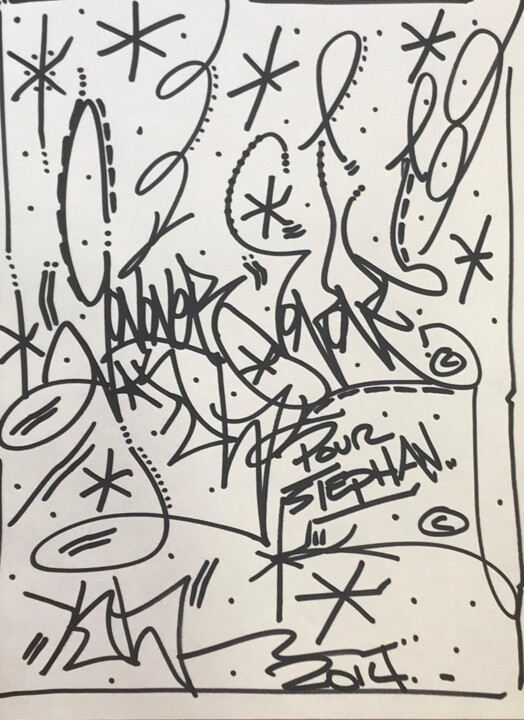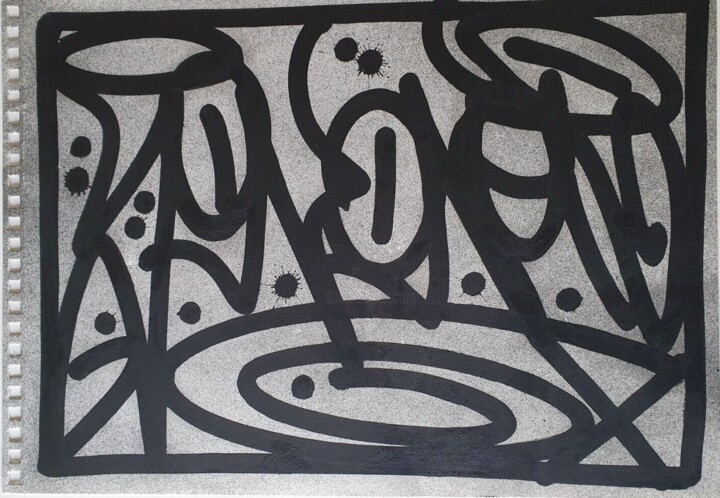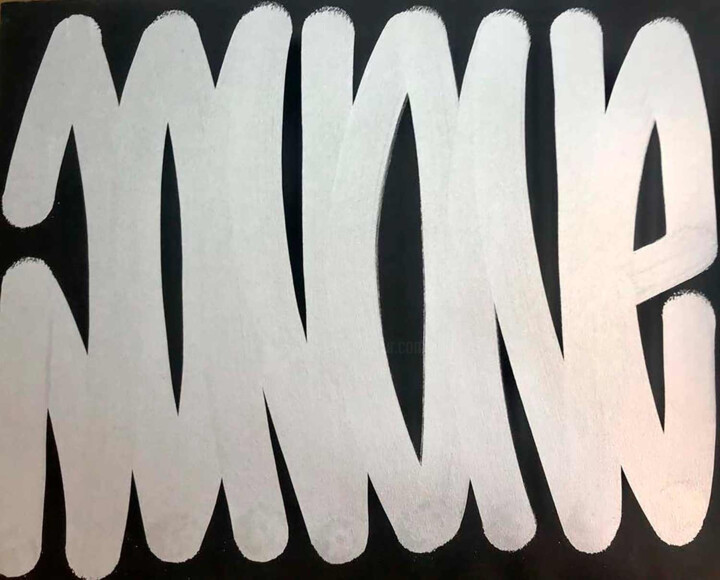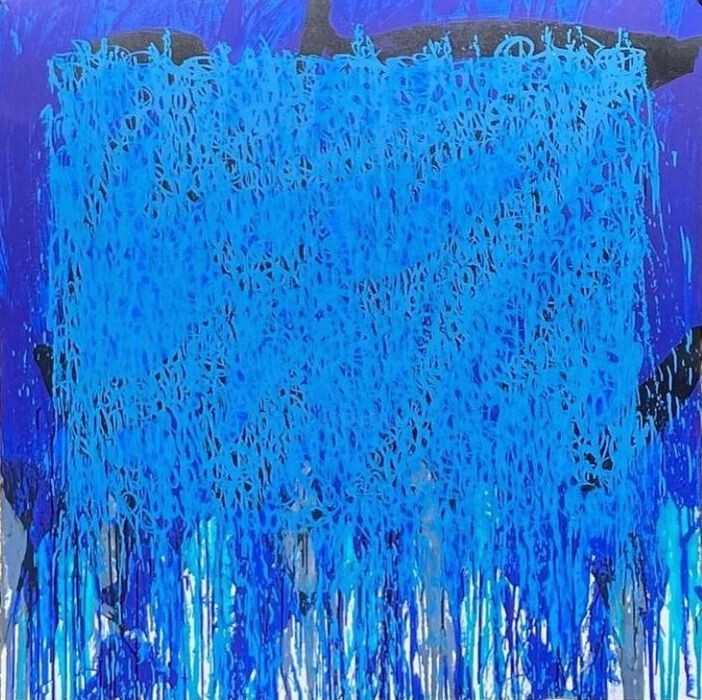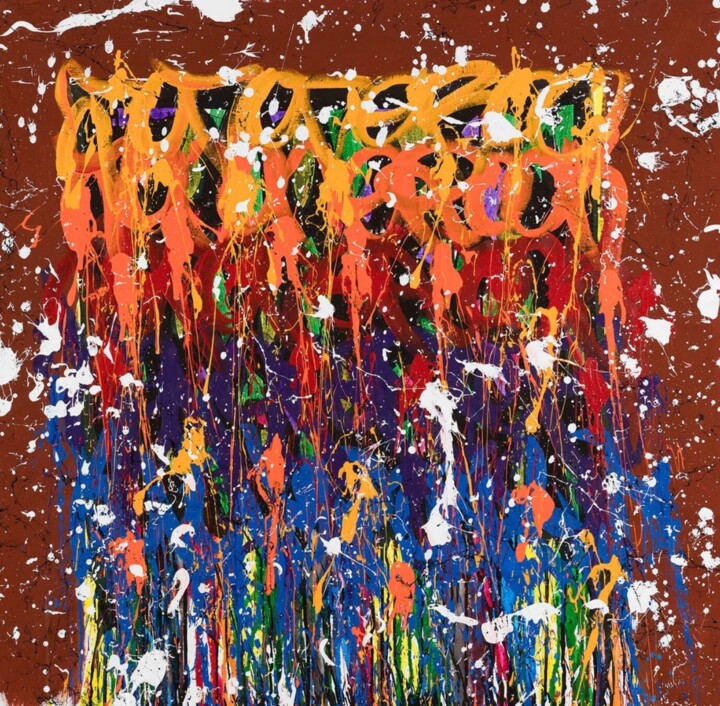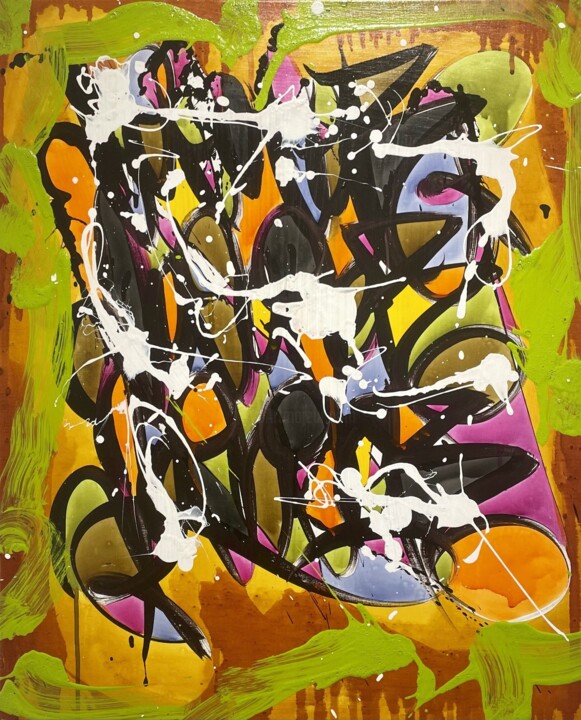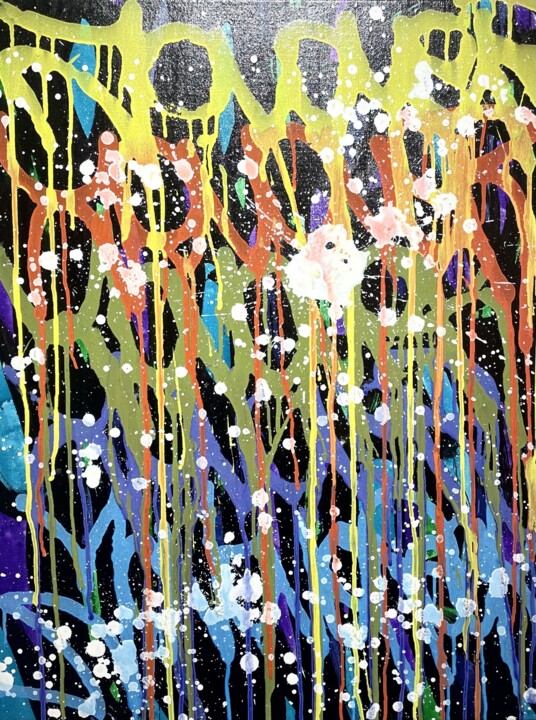JonOne (born John Andrew Perello in 1963), also known as Jon156, is a prominent American graffiti artist whose vibrant and dynamic works have captivated audiences worldwide. Originally hailing from the bustling streets of New York, JonOne has successfully transitioned his creative base to Paris, where he continues to innovate and inspire within the contemporary art scene. His journey from the urban canvases of Harlem to the refined galleries of Europe underscores his unique blend of street art and abstract expressionism, making him a significant figure in the evolution of modern graffiti.
Artist Biography: JonOne
JonOne, born John Andrew Perello in 1963 and also known as Jon156, is a contemporary American graffiti artist whose journey has taken him from the vibrant streets of New York to the artistic hub of Paris. Hailing from the bustling neighborhood of Harlem, JonOne's fascination with street art was kindled in his youth as he witnessed the vivid graffiti and tags adorning subway cars and city walls. At the age of 17, he began his graffiti journey, creating his distinctive tag "Jon156" with his childhood friend "White Man," and leaving his mark on the walls and trains in his neighborhood. For JonOne, the subway was more than just a mode of transportation; it was a moving museum that traversed the heart of the city.
In 1984, JonOne founded the graffiti collective "156 All Starz" to unite fellow artists who shared his passion for painting subway cars under the veil of darkness. This activity served as an outlet for coping with the challenges they faced, including drug use. During this period, he met artist Bando, who invited him to Paris in 1987. JonOne's relocation to Paris marked a significant turning point in his career, as he transitioned from street art to painting on canvas. JonOne began his work on canvas at the Hospital Ephemeral, a building turned artist squat in the 18th arrondissement of Paris. Here, he collaborated with artists like A-One, Sharp, Ash (Victor Ash), Jayone, and Skki, honing his skills and expanding his artistic repertoire. His vibrant works quickly gained attention in Parisian art circles, leading to notable exhibitions, including one at Gallery 45 Gleditsch in Berlin in 1990 and "Graffiti Paris" on rue Chapon in Paris.
A milestone in JonOne's career came in 2007 when his artwork Match Point, a large canvas created at the Hospital Ephemeral in 1993, was auctioned at Artcurial for €24,800, setting a record for the artist and marking the highest bid ever for a graffiti artwork in France. This achievement underscored JonOne's growing prominence in the art world. Since 2013, he has further enriched his creative portfolio by collaborating with Didier Marien from the Boccara Gallery on a significant series of street art rugs. Throughout his career, JonOne has maintained that art is his sanctuary and a means of self-expression. His journey from the streets of New York to the galleries of Paris highlights his evolution as an artist and his enduring impact on the contemporary art scene.
Brief History of Abstract Expressionism
Abstract Expressionism emerged in the U.S. during the late 1940s and 1950s, influenced by World War II's aftermath and prior social realism. Coined by Robert Coates in 1946, the movement centered in New York City with artists like Arshile Gorky, Jackson Pollock, Willem de Kooning, and Mark Rothko. It fused Surrealism's subconscious creation, German Expressionism's emotional intensity, and European avant-garde influences like Futurism, Bauhaus, and Synthetic Cubism.
The movement featured diverse styles: Action Painting, exemplified by Pollock and Kline, focused on the physical act of painting, while Color Field Painting, represented by Rothko and Newman, emphasized large color areas to evoke meditation or spirituality. Post-war America's cultural milieu and an influx of European avant-garde artists fleeing WWII enriched the scene, fostering innovation. Critics Clement Greenberg and Harold Rosenberg were pivotal in promoting Abstract Expressionism, highlighting its formal qualities and existential aspects, respectively. By the early 1960s, the movement waned, supplanted by Pop Art and Minimalism, but its influence persisted in subsequent movements like Tachisme and Neo-expressionism.
Graffiti: Graffiti, encompassing unauthorized art on surfaces, ranges from basic tags to elaborate murals. Its roots in ancient Egypt, Greece, and Rome contrast with today's view as vandalism, often penalized for associations with gangs. Despite controversy, graffiti's cultural impact is profound, originating in 1970s NYC and evolving globally into intricate street art. Ancient graffiti like Sri Lanka's Sigiriya and US Independence Rock offers historical insights. In the 1960s-70s, graffiti began mainstream recognition, influenced by hip hop and showcased in media like Style Wars. Commercialization followed, integrating new techniques such as stencils and yarnbombing, and technology like projected images. Graffiti serves personal and political expression, challenging norms (Banksy) or enhancing urban aesthetics (Pixnit). Legalization efforts and designated zones underscore its acceptance, with global responses varying: European urban laws contrast with Beijing's leniency or strict penalties in Singapore and South Korea. Australia balances strict laws with designated zones, recognizing graffiti as both rebellion and cultural asset.
Now or Never (2022) by Jonone
Jonone, Now or Never, 2022. Painting, Acrylic on Canvas, 120x120 cm.
Now or Never (2022) is a vibrant painting by Jonone, whose work reflects his deep roots in urban culture and the graffiti art scene of New York City. The artwork Now or Never is a testament to his distinctive style, blending graffiti elements with abstract expressionism. The canvas bursts with energy and movement, capturing the urgency and spontaneity characteristic of both street art and abstract painting. Bold colors intersect with dynamic lines and shapes, creating a visual rhythm that pulls the viewer into the composition. Jonone's upbringing in Harlem, surrounded by the colorful graffiti that adorned the city's walls, deeply influenced his artistic journey. His transition from painting city walls as a teenager to exhibiting in galleries worldwide underscores his evolution as an artist who bridges the gap between street art and fine art. Now or Never embodies Jonone's ability to merge the raw, gritty aesthetic of graffiti with the expressive freedom of abstract painting. Through this artwork, Jonone invites viewers to experience the vitality and immediacy of urban life, encapsulating a moment of bold creativity and cultural resonance.
Matches (2020) by Jonone
Jonone, Matches, 2020. Painting, Acrylic on Canvas, 53x69 cm.
Matches (2020) by Jonone is a striking artwork that exemplifies the artist's mastery of graffiti-infused abstract expressionism. Created with acrylic on canvas, this original piece is a vivid exploration of color, form, and movement. The painting is characterized by a dynamic interplay of colors against a backdrop of deep black, which serves as a dramatic contrast, enhancing the vibrancy of the composition. The colors transition seamlessly from a gradient of yellow, orange, green, purple, to blue, creating a sense of depth and dimensionality within the artwork. White spots strategically placed throughout the canvas act as highlights, adding balance and visual interest. Jonone's graffiti roots are evident in the way forms and lines seem to drip down the canvas, a technique that echoes the spontaneous and energetic nature of street art. This dripping effect not only adds a sense of fluidity and motion but also imbues the artwork with a raw, urban aesthetic. In terms of style, Matches embodies abstract expressionism, characterized by its emphasis on spontaneous, intuitive brushwork and the artist's emotional expression. The painting captures a moment of creative spontaneity, where the artist's gestures and movements are visibly present on the canvas. Overall, Matches is a compelling artwork that bridges the gap between street art and fine art, showcasing Jonone's unique ability to blend graffiti aesthetics with the expressive freedom of abstract painting.
Some of JonOne's most iconic artworks span various phases of his career. His 1999 piece stands as a testament to his early exploration of the vibrant energy and expressive freedom found in graffiti art. In 2009, Thalys represented a significant collaboration, where his art adorned a moving canvas, blending urban aesthetics with public transport. The works Composition and Silver autoportrait, both created in 2010, showcase JonOne's evolution into abstract expressionism, characterized by bold compositions and a distinct use of color. Continuing into his later career, Untitled (2013) remains notable for its dynamic brushwork and layered meanings. Additionally, pieces like Cantona's Rolls Royce, Flop, Jon156, Piece, and Tag highlight JonOne's prolific output and ongoing exploration of graffiti's transformative potential in contemporary art.
Exhibition History
JonOne's exhibition history unfolds as a testament to his evolution from street graffiti artist to a globally recognized figure in contemporary urban art. His career began in the early 1980s with exhibitions at New York's influential art spaces like Front Line and Fun Gallery, where he honed his distinctive style. By the late 1980s, JonOne expanded his presence internationally, exhibiting at venues such as Galerie du jour agnès b. in Paris, setting the stage for a series of solo shows across Europe and the United States throughout the 1990s. His participation in major exhibitions like "The Armory Show" in New York and "Ginza" in Tokyo during the early 2000s further solidified his reputation. Into the mid-2000s and beyond, JonOne's exhibitions became more prolific and diverse, encompassing solo showcases at prestigious galleries like Galerie Helenbeck in Nice and participation in international art fairs such as FIAC. Recent years have seen JonOne's exhibitions continue to resonate globally, with shows in cities like Hong Kong, Milan, and Chicago, underscoring his enduring influence bridging the worlds of street art and contemporary painting.
In brief, JonOne's artistic journey from the vibrant streets of New York to the cultural epicenter of Paris epitomizes his transformative impact on contemporary urban art. Born John Andrew Perello in 1963, JonOne's evolution from a graffiti artist tagging subway cars in Harlem to a globally renowned figure reflects his ability to transcend traditional boundaries of street art. His exhibitions at prestigious venues worldwide, from New York's Front Line and Fun Gallery in the 1980s to Galerie du jour agnès b. in Paris and beyond, underscore his progression and innovation within the art world. JonOne's signature blend of street art aesthetics with abstract expressionism resonates in his vibrant compositions, capturing the raw energy of city life while elevating graffiti to the realm of fine art. His enduring influence continues to inspire new generations, solidifying his legacy as a pivotal force in shaping the dialogue between urban culture and contemporary artistic expression.




 Selena Mattei
Selena Mattei


